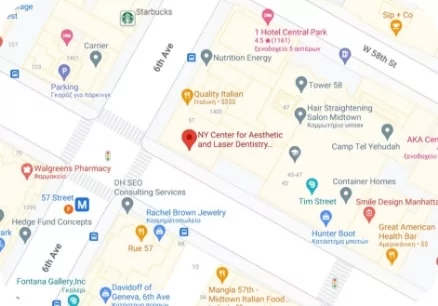
We all want a beautiful, perfectly aligned, confident, charismatic smile. Invisalign clear aligners are the best way to achieve the confident, charismatic smile of your dreams. Invisalign is virtually invisible, so you can achieve your dream smile without anyone ever finding out!
Our expert dentist, Dr. Poiman, wants to help you achieve the smile of your dreams while maintaining your overall health. We believe that a beautiful smile will severely boost your self-confidence, so you never have to hide your smile from anyone. We are 100% focused on providing you and your family with the best cosmetic procedures.
Invisalign is a better option than traditional braces, giving a subtle and comfortable way to get a straighter smile. Invisalign can fix crowded teeth, gaps, or misalignments, giving you the confident smile you deserve.
Schedule your Completely FREE, no obligation, Invisalign Consultation NOW and surprise your family and friends with your charismatic, confident new smile.
Our expert Invisalign dentists and dental staff are here to care for all your dental needs. During your appointments, we ensure to give you 100% of our attention. Invisalign clear braces are virtually invisible and provide many added benefits to stainless steel traditional metal braces.
Invisalign Can Give You a Stunning Brand New Smile in Manhattan
If you’re looking for a virtually perfect smile for yourself or someone you love, you’ve come to the right place! We specialize in transforming smiles and lives with Invisalign at the NY Center for Aesthetic and Laser Dentistry.
Our expert dental team, led by Dr. David Poiman will guide you towards a beautiful, charismatic smile with Invisalign. We are here to assist you every step of the way, ensuring the best results for your smile.
We are conveniently located in Midtown NYC, making us easily accessible to anyone in New York. We provide top-notch personalized dental care in a stress-free, welcoming environment for you and your family.
Invisalign New Smiles from Our World Famous Invisalign Dentists
Invisalign treatment uses 3D imaging to make custom clear aligners that move your teeth into the right place. These braces for teeth are tooth colored, making them virtually invisible. They are an excellent choice for those wishing to align their teeth discreetly. Invisible aligners are unlike traditional ligating braces with wires or ceramic brackets. Wearing braces for 22 hours a day is crucial to maintain a beautiful smile. You can easily take them out to eat and clean your teeth due to their flexibility. With Invisalign, you can maintain your oral hygiene and enjoy your favorite foods while getting effective aligner treatment!Benefits of Invisalign for a Straighter Smile
At the NY Center for Aesthetic and Laser Dentistry in Manhattan, we know the importance of having a beautiful smile. After all, it’s the first thing anyone notices about you, whether it’s a family event or an office meeting. Straight teeth can help boost your self-confidence and make you the center of attention in any room you walk in. Invisalign provides a wide range of benefits than other types of braces, like lingual braces. The benefits of a beautiful smile with Invisalign include:- Improved Oral Hygiene: Straight teeth are easier to clean and maintain compared to misaligned or crowded teeth. Straight teeth make brushing and flossing easier, reducing plaque buildup, cavities, and gum disease.
- Better Periodontal Health: Misaligned teeth can lead to gum problems and periodontal disease. By aligning your teeth with Invisalign, you can improve gum health and reduce the risk of periodontal disease.
- Better Digestion: Properly aligned teeth can help you chew properly and promote better digestion and nutrient absorption.
- Reduced Jaw Pain and TMJ Disorders: Crooked teeth can cause jaw misalignment and TMJ disorders, leading to pain and discomfort in the jaw. Invisalign can help correct jaw tension and minimize TMJ-related issues.
- Clear speech: Aligned teeth help with proper pronunciation for sounds requiring correct tooth and tongue placement.
- Decreased Risk of Dental Injuries: Properly aligned teeth are less prone to chipping or breaking during accidents. You can enjoy your sports activities without any concern for your smile.
- Overall Health Benefits: With good oral health, you will have a low risk of heart disease and diabetes.
We believe Invisalign can transform your smile and improve your health with tooth movement. Our skilled dentists will design a customized Invisalign treatment to give you the smile you deserve.
Schedule your Completely FREE, no obligation, Invisalign Consultation NOW and surprise your family and friends with your charismatic, confident new smile.
Invisalign Clear Aligner Process

In your FREE Invisalign consultation, we’ll review your health history and create a personalized treatment plan. However, the general guidelines of what to expect are as follows:
- Get Your FREE Consultation: With our famous Invisalign expert, we will evaluate your teeth and discuss what you want for your smile. Dr. Poiman will check your oral health and discuss your smile goals to make you a personalized Invisalign plan.
- Treatment Plan: We will use a digital scan to create a personalized treatment plan according to your unique needs. This plan will show you how your teeth will move with treatment. This allows you to visualize the expected outcome and see your new smile before you leave our office.
- Aligner Usage: We will make custom aligners for you after creating a plan. You wear each aligner for one to two weeks before moving on to the next set to get that picture-perfect smile.
- New Smile: With our align technology, your teeth will move into the perfect position, giving you a beautiful smile.
WOW! Straighter Teeth in just 120 Days? Now That’s Something to Smile About!
On average, Invisalign can significantly improve your smile in as little as 120 days. Clear aligners straighten teeth quickly, and with accelerated orthodontics, treatment time can be cut in half! We have the best Invisalign near you services that will give you the perfect smile in half the time.
Imagine having a whole new smile in just a few months—that’s certainly something to smile about! The aligners are custom-made for your teeth, and you’ll switch to a new set every one to two weeks. They make your body heal faster, so your teeth move quicker, and you get a new smile faster.
Start Your Journey Toward The Smile of Your Dream Today!
If you’re looking for a beautiful, charismatic smile that will boost your self-confidence, you have come to the right place! Our Manhattan-based dental clinic has been providing the residents of Manhattan and surrounding areas with beautiful smiles. Our dental expert always listens to all your concerns and provides tailored solutions according to your smile goals.
Schedule your Completely FREE, no obligation, Invisalign Consultation NOW, and surprise your family and friends with a charismatic, confident new smile.
Call 212-371-1414 now, and our friendly team will schedule your completely FREE, no-obligation Invisalign Consultation! Get your new amazing smile for as low as $69-$99 monthly, less than a daily coffee in Manhattan midtown!



